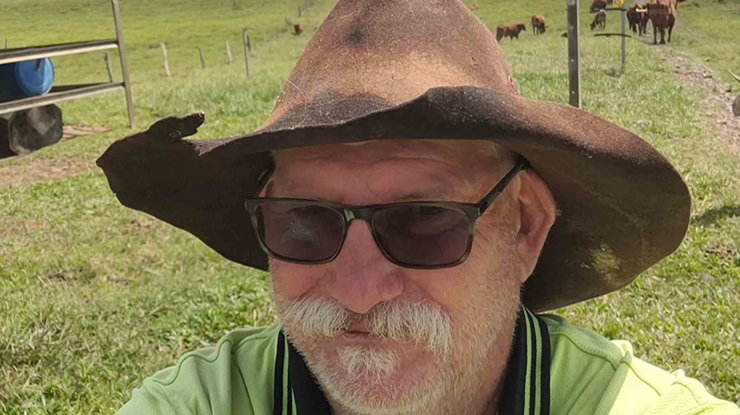
The season ahead looks promising for Mick Kruckow after implementing changes to cattle nutrition.
On Mick Kruckow’s 60-hectare property in northern Queensland, nutrition was proving a big challenge for his cattle, and breeding success was bearing the brunt of the impact.
Despite successful calving seasons, first calf heifers often weren’t heavy enough to join the following year.
After attending a workshop earlier this year, outcomes are looking more promising for the season ahead, with his cattle finally beginning to see some weight gain.
Weight is money
Soil testing has revealed Mick’s property (south of Cairns) is lacking in pH, and is high in aluminium and iron, making adequate nutritional intake for cattle through pastures difficult.
“We’re on rainforest country, which is really poor soil,” Mick said.
“Our younger cattle were really struggling to maintain condition when they had a calf, and it was starting to impact our breeding success.”
After trying lick blocks, which were high in cost with varied results, Mick decided to search elsewhere, leading him to a Nutrition EDGE workshop, where the opportunity to connect with similar producers saved the day.
“The workshop deliverers and the other attendees had some useful ideas, and we’ve started feeding all our cattle a mix containing urea, molasses and phosphorus. The results have been much better,” Mick said.
“Especially the younger cattle, who were trying to raise a calf and constantly losing weight, are now maintaining condition which is really good for us.”
The combination of the feed supplements was calculated to cost him 17¢/day.
“Rations are based on a seven-day intake and cost increases have been surprisingly minimal, but we are always on the lookout for more economical and less time-consuming options.”
The herd has maintained a high stool sample quality throughout the wet season and a wetter-than-usual winter, indicating a vastly improved feed conversion.
Operation changes
Following the nutrition workshop, Mick also increased the consistency of weighing his cattle – particularly weaners – to gain better insights into what was and wasn’t working.
“We weigh the weaners to get a baseline from weaning through to when they go to market,” Mick said.
“We learned that our weaners were gaining 600 grams to a kilo each day once they were on the new feed mix. Before, it was around 180 grams each day.”
In addition, Mick undertook diet quality testing of his own pastures and has begun to consistently rotate cattle across paddocks over an increased period.
“It used to be a 30-day rotation, but we’re trialling increasing that to 60 days.”
“What we’ve found is that the cattle have plenty of grass, and don’t have to go looking for it,”
The result is the cattle using less energy and are maintaining weight gain.
Although he runs a smaller operation, the benefits of attending the workshop have been clear.
“My son Cameron attended the course five years ago in the Northern Territory and attended the class with me as a refresher. I think I’ll return in five years too, when there’s plenty more to learn.”
“The goal is to have mothers in good condition to join and calf, and we’re now on our way there after attending the Nutrition EDGE workshop and altering our farming practices.”







